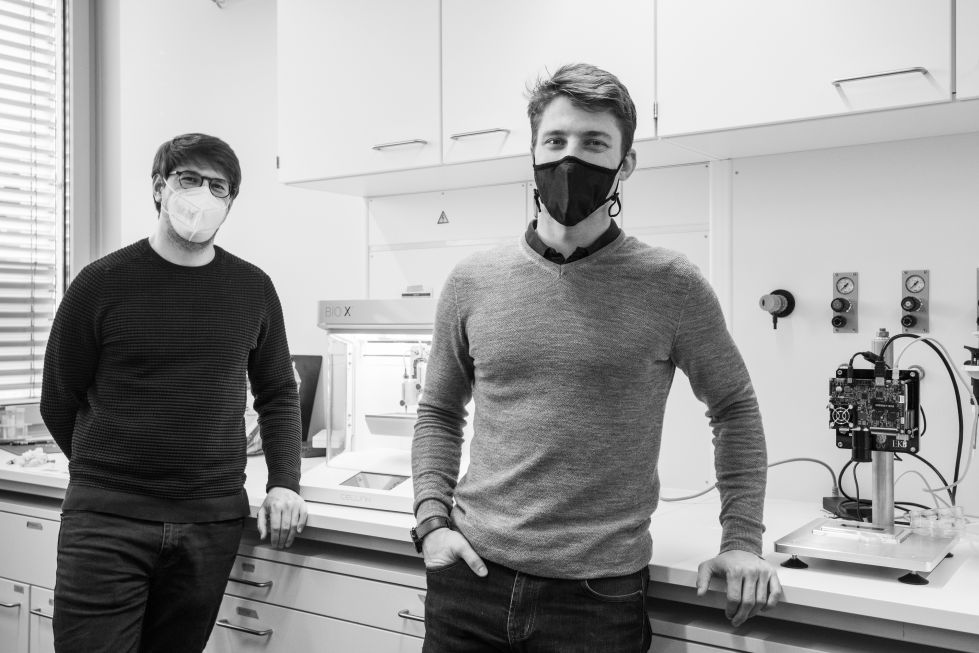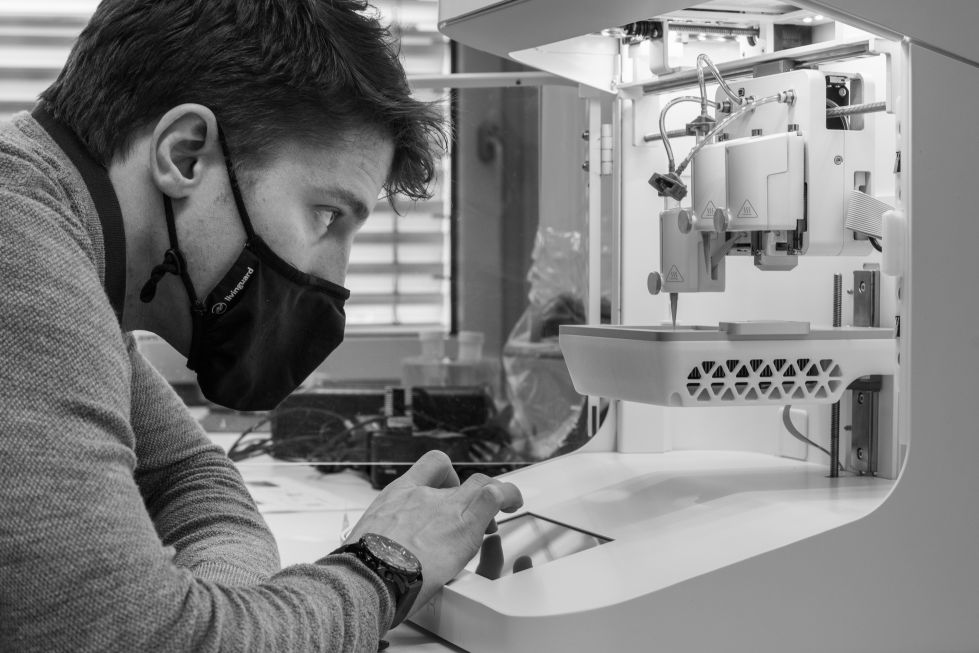additivETH success stories
Over the last decade, the application of Additive Manufacturing (AM) has expanded significantly, especially in fields where additive processes and customized design are needed to fabricate complex objects. In some sectors, the requirement for lightweight construction combined with freedom of design were decisive factors for adopting additive processes. In the medical sector, an additional enabling advantage of AM is the ability to personalize medical devices in order to provide patient-specific solutions.
Additive manufacturing for patient-specific solutions
The complexity and diversity of individuals, including differences in patient genetics, anatomy, and disease progression, makes the common “one-size-fits-all” approach suboptimal. Therefore, there is growing interest in using AM technologies to fabricate personalized medical therapies based on patient-specific implants, such as prostheses. Additional precision biomaterials for patient-specific therapies are being enabled by bioprinting, a general approach in which cells from the patient are encapsulated within the material and used to print tissue-like scaffolds.
Technologies for Bioprinting
Two main AM approaches are be used for bioprinting, (i) stimulus-triggered technologies, which create 3D objects by inducing solidification of the material, or (ii) deposition-based technologies, which create 3D structures by depositing material at defined locations. The particular challenge with extrusion-based processes, such as Direct Ink Writing (DIW), is that the ink must easily flow through the printer nozzle during extrusion, and recover sufficient mechanical properties to stabilize the 3D structure or organ.
The universal nanocarrier ink platform
This is the challenge that Elia Guzzi and Mark Tibbitt from the Macromolecular Engineering Laboratory (Department of Mechanical and Process Engineering) have been working on over the last 3 years. Their solution was to decouple the mechanical properties required for extrusion from the biofunctionality of the final construct needed for different applications. The developed «universal nanocarrier ink platform» provides a fast and robust method to tune the mechanical properties of new formulated (bio)inks. The formulation of the platform is based on semi-synthetic polymer chains and biodegradable polymeric nanoparticles that reversibly interact and form a physical network. During extrusion, the network partially breaks and flows easily through the nozzle (commonly referred to as “shear-thinning”), and after deposition, the ink regains the initial mechanical properties.
Nanoparticles as key elements
To give a 3D printable material these unusual properties, the use of nanoparticles in the universal nanocarrier ink platform is essential. With their help, it is possible to achieve behaviors that would not be possible with conventional approaches. Depending on the embedded polymers chains combined with the platform, different post-curing processes can be applied to further enhance the mechanical properties of the 3D construct.
Computer simulations for the pre-selection of materials
To design these characteristics, researchers nowadays no longer rely on experiments alone: Computer simulation is playing an increasingly important role in the design of AM processes. Although this approach does not yet allow an absolutely reliable prediction of the properties of a material composition, it can guide material selection and design and 3D fabrication. With little effort, the resulting formula can be fine-tuned to the desired behavior.
A platform for new functions
The materials previously used for 3D bioprinting had to be individually designed for the desired purpose (i.e., depending on the type of biological tissue), requiring significant effort to adapt known technologies to new application. In contrast, the patent-pending platform developed at ETH Zurich is of particular interest, as it enables the straightforward embedding of various biomaterials and rapid formulation of new functional (bio)inks.
This approach enables a versatile range of applications, and opens new and exciting future perspectives. For example, it is possible to incorporate patient-specific medications into the carrier ink, the release of which can then be controlled over a longer period of time. Current research is exploring this approach for the suppression of rejection reactions.
Multimaterials for complex functionality
The use of DIW opens up further interesting possibilities: for example, the production of «multi-material» scaffolds to better replicate the complex material composition of organs. In the long term, this could, for example, facilitate the vascularization of printed biological tissues and improve implant integration in the human body. The nanocarrier ink platform developed by Elia Guzzi facilitates the combination of two or more ink to fabricated multi-materials constructs.
New technical possibilities lead to new challenges
This enormous versatility of the universal carrier ink also creates a new challenge for the two researchers: Despite all efforts and aspirations for «Personalized Medicine» and «Precision Medicine», the certifications required for the clinical application is only valid for exactly one chemical formulation of a material. Here (as is already being started in other sectors), the certification procedures will have to be changed to new approaches (such as certification of processes and models and not of materials) in the future. However, this is extremely complex and has not yet been sufficiently researched so far.
Collaboration to tackle challenges
The example of the «universal nanocarrier ink» demonstrates how new possibilities and opportunities also lead to new challenges in very different fields. In particular, the much-cited character of 3D printing as a “disruptive innovation”, with its new design possibilities and individual solutions, requires massive changes to the subsequent processes in order to fully develop its potential. It is precisely this point that shows the importance and interdisciplinary exchange that ETH offers its researchers in order to be prepared for these new challenges.
Reference
Guzzi EA, Bovone G, Tibbitt MW: Universal Nanocarrier Ink Platform for Biomaterials Additive Manufacturing. Small, vol. 15: no. 51, pp. 1905421, 2019.
external page DOI: 10.1002/smll.201905421
Contact
ETH Zurich, )
Elia Guzzi ()
additivETH success stories
3D-Printing (also known as Additive Manufacturing or short AM) is considered a disruptive technology that affects manufacturing, products, and value chains.
Researchers of ETH drive these transformations by developing innovative materials, processes and use cases for AM.
With the initiative «additivETH success stories», the Competence Center for Materials and Processes features research projects highlighting the potential but also upcoming challenges of AM implementation.
Questions?
For further information, for instance, about AM activities at ETH Zurich or to join the ETH AM Community and related mailing list, please send us an

